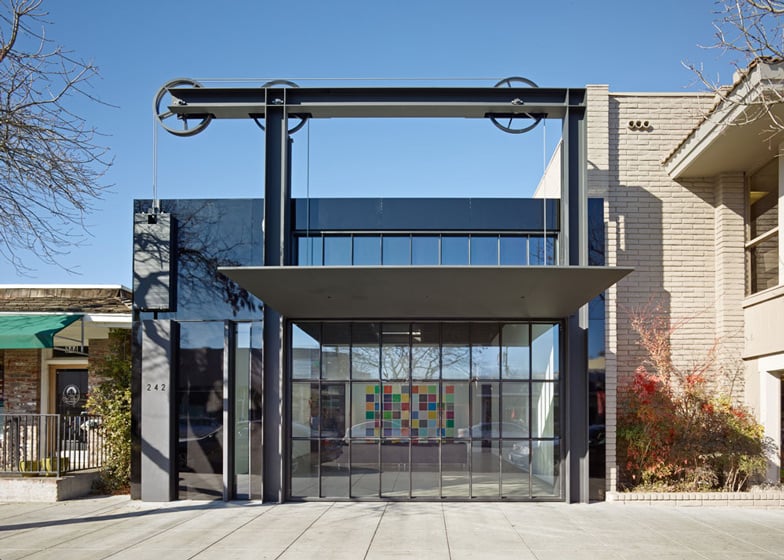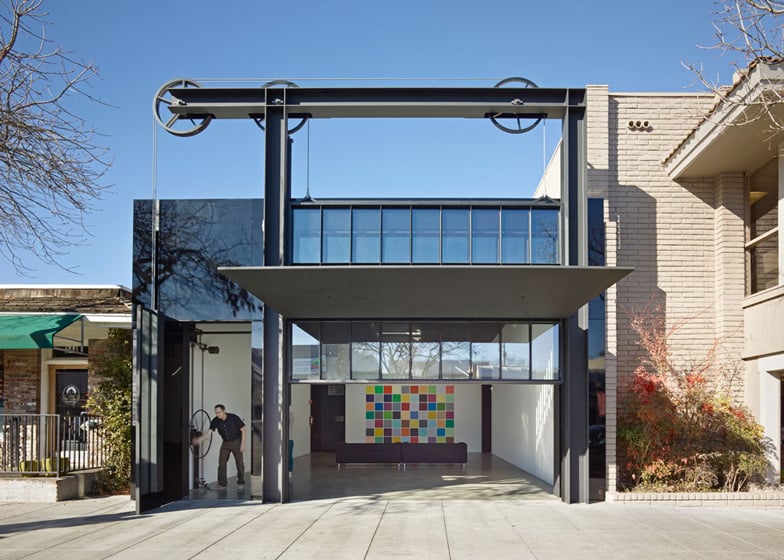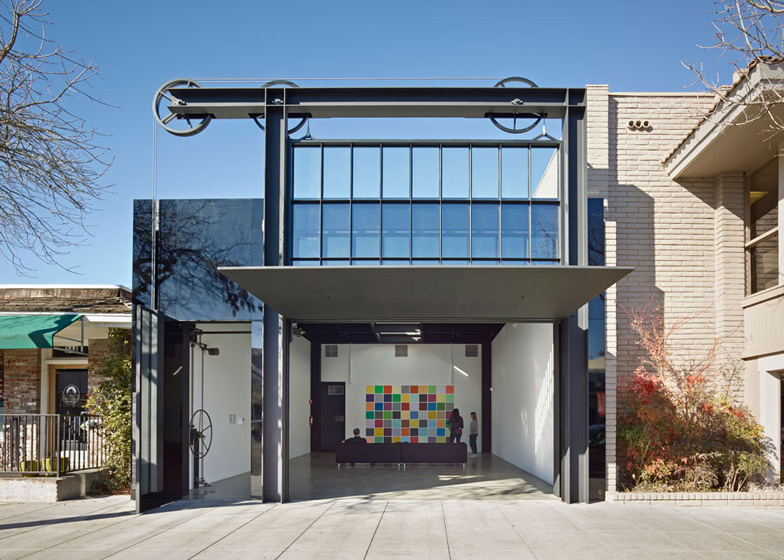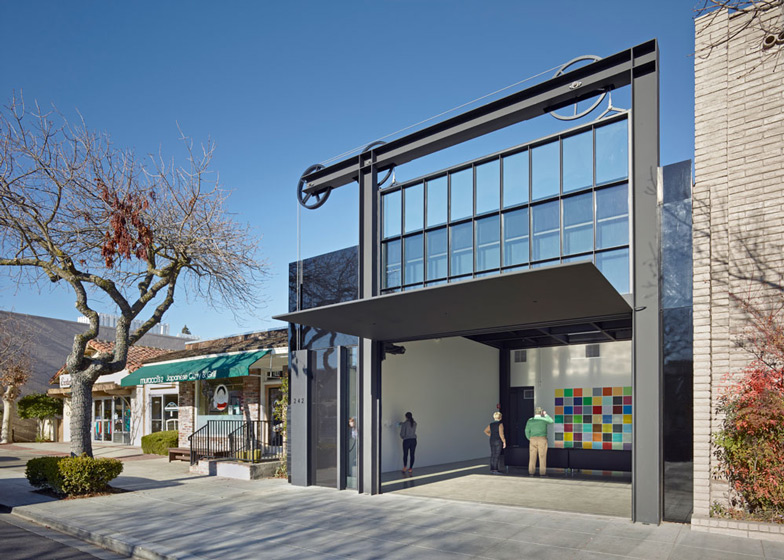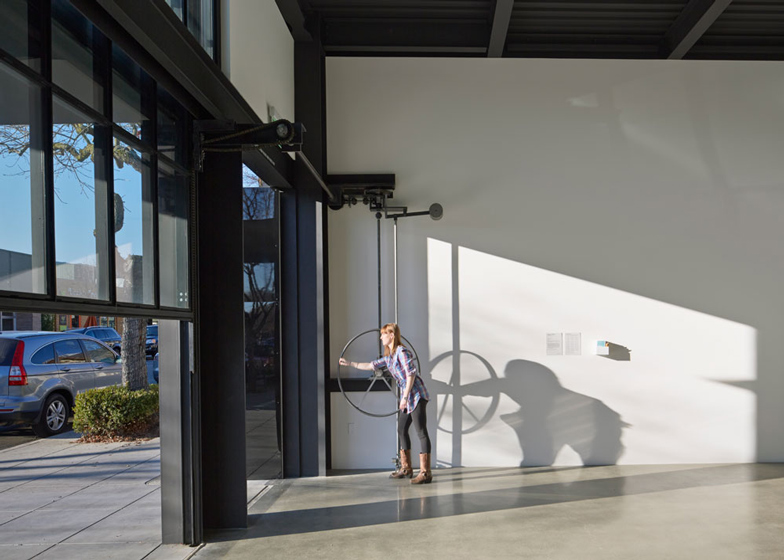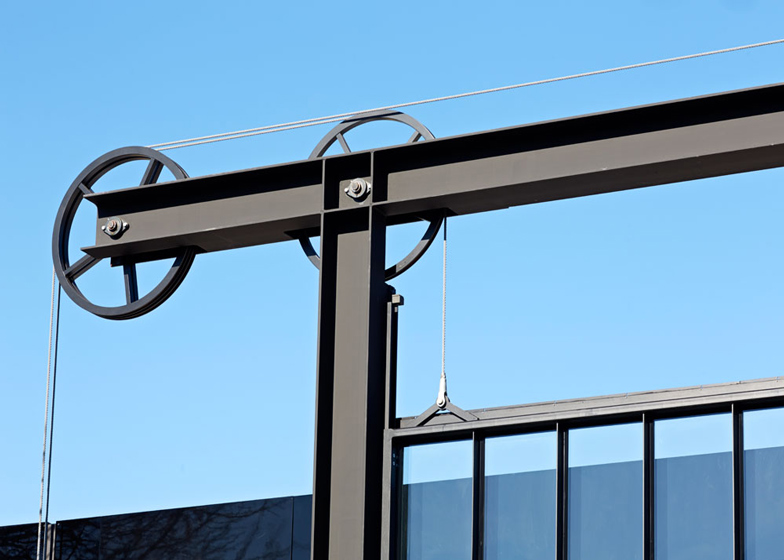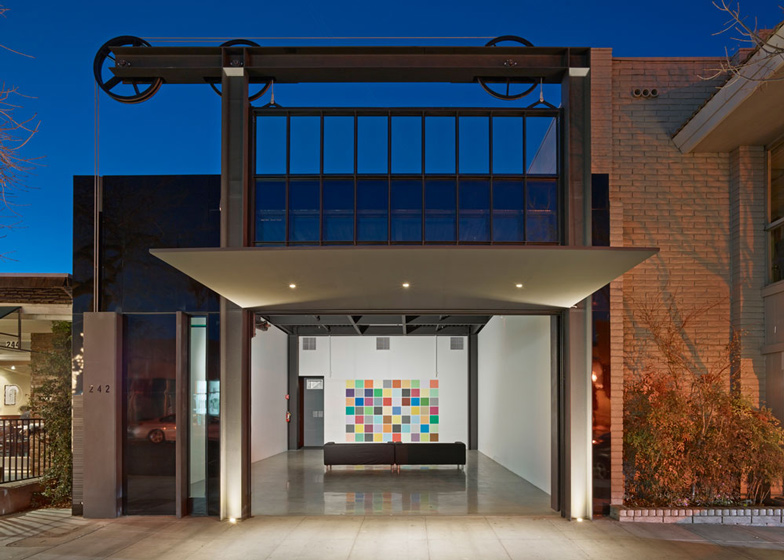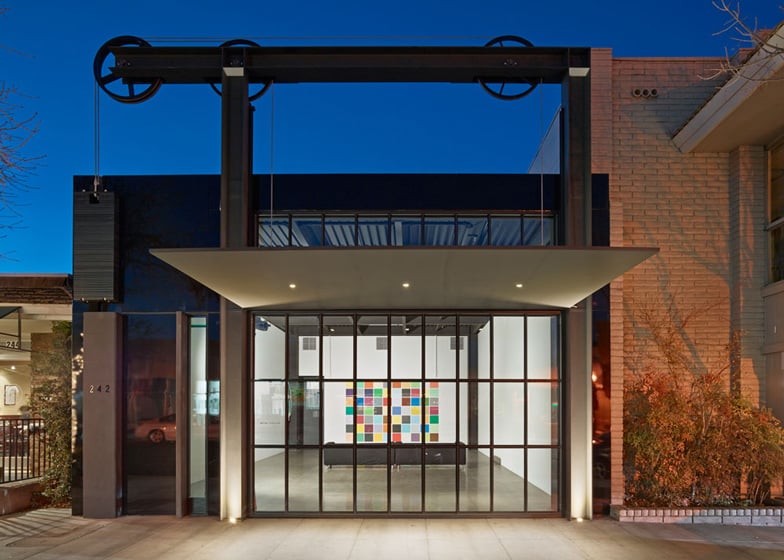A wall of windows winches up and down to reveal the interior of this gallery renovation in Los Altos, California, by Seattle architect Tom Kundig (+ slideshow).
Kundig, principal designer at Olson Kundig Architects, added the new mechanical facade to a vacant 1950s building at the heart of the Silicon Valley community, creating a temporary gallery space able to reveal its contents to the neighbourhood.
The five-metre-high grid of windows is hooked up to a system of gears, pulleys and counterweights. To set them into motion, a pedal must be engaged to unlock the safety mechanism, before a hand wheel can be rotated to begin lifting or lowering the facade.
In this way, 242 State Street is able to "morph from an enclosed structure into an environment that invites the community into the space," says Kundig.
The interior, previously used as an Italian restaurant, was left largely unchanged to create a flexible space for displaying different types of artwork.
Kundig did however raise the roof by half a storey to create a more generous setting for larger pieces, and inserted a row of skylights to allow more natural light to reach the back of the space.
A pivoting door was also added to provide access to the gallery when the facade is closed, while the steel beams supporting the pulley system could for be used to support signage.
The gallery opened at the end of 2013 as one of the ten venues for Project Los Altos, a local art initiative launched by SF MoMA. Artist Spencer Finch created a site-specific installation at the front of the space - a grid of colourful squares that resonated with the new facade - while Jeremy Blake installed a digital projection behind a temporary screen.
Photography is by Bruce Damonte.
Here's a short project description from Tom Kundig:
Los Altos, California
Located in downtown Los Altos, the highlight of this 2,500 square foot adaptive re-use project is the introduction of a new facade that enables the circa 1950's building to morph from an enclosed structure into an environment that invites the community into the space.
The transformation was achieved by essentially replacing the entire front facade with a double-height, floor-to-ceiling window wall that can be raised or lowered depending upon the needs of the user.
The window wall is operated by engaging a pedal - to unlock the safety mechanism - then turning a hand wheel which activates a series of gears and pulleys that opens the sixteen-foot by ten-foot, counterweighted two-thousand pound window wall. When the window wall is closed, visitors to the shop enter through a ten-foot-tall pivot door.
In addition to the front facade, other changes to the building included raising the roof by half-of-one story to create a better proportioned interior volume, and installing skylights to bring in more natural light.
The building most recently served as one of the temporary off-site locations for SF MoMA's Project Los Altos. Beyond the introduction of the window wall, the interior was relatively untouched, leaving the space as flexible as possible for its future tenant.

